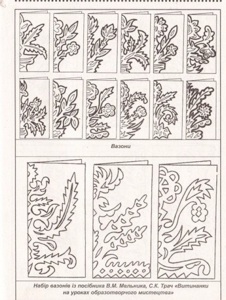Paper Cut-Work
Витинанки
Paper Cut-Work
Витинанки

The intricate art of vytynannia is believed to have originated among upper class Ukrainians and government officials toward the end of the 15th or early 16th century. Only later did it filter down through to the general population. Decorative paper cut-outs were first used in the sealing of private letters and official documents, where the patterned cut-out would receive a drop of sealing wax imprinted with an official or family seal. This was common practice in many European countries at the time, bit the cost of the colored paper putting it out of reach for most households.
During the 19th century paper became more affordable and the art of cutting out vytynanky began to develop and spread across Ukraine (and to neighboring Poland) as a means of decoration. Some cut-outs tookon symbolic meaning, and the art becoming an integral part of the country's tradition and culture. Through the writings of 19th century Ukrainian author Hryhoriy Kvitka-Osnovyanenko it is known that vytynanky were used extensively in the interior of the houses of peasants, and at that time the cut-outs were known by a number of names in different regions, including kvity, stryhuntsi and khrestyky. By the early 20th century, vytynanky became the most widely used name for the increasingly popular decorative art.
Vytynanky began to be written about, collected and exhibited, often along with traditional crafts such as embroidery, ceramics, pysanky and rugs. The biggest problem facing collectors was how to preserve these delicate creations, and historic collections are generally kept under controlled conditions in museums such as the Museum of Ethnography and Applied arts in Lviv.
In everyday life, people would simply make new vytynanky from time to time as they washed down walls or repainted the interior of their homes. Vytynanky which were made for the occasions of religious feasts and holidays were more decorative than the ones used for everyday decoration. Christmas and Easter called for vytynanky in the shapes of angels, churches or even whole evangelical scenes to be pasted prominently on the walls. Marriages saw vytynanky in the shapes of doves, flowers, or the ones that formed a “tree of life.” Vytynanky vary from region to region, with some remaining monochrome, others being multi-colored, and some even being embellished with beads and other colorful or shiny items.
For a time in the 1960s and 1970s it appeared that vytynanky might die out, but the craft experienced a revival and today children at school are taught the basics of the art, ensuring that it lives on.
(–based on a WIkipedia article, and copied largely from this site.)
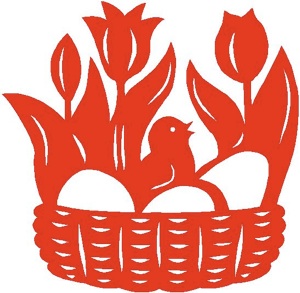
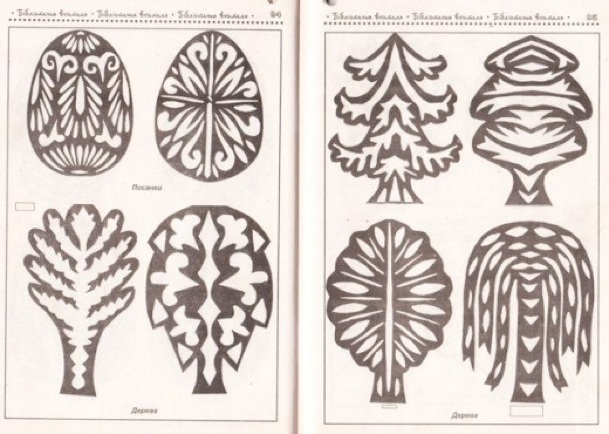
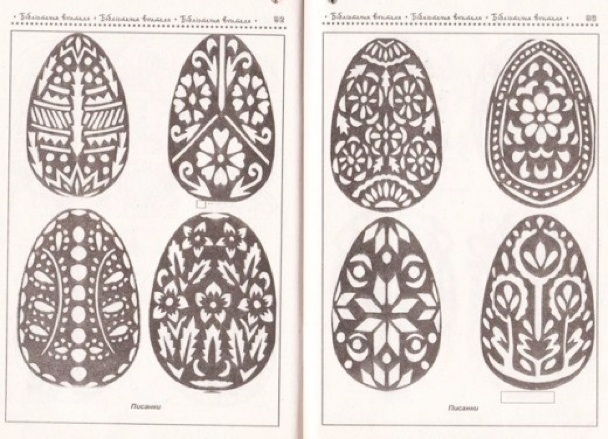
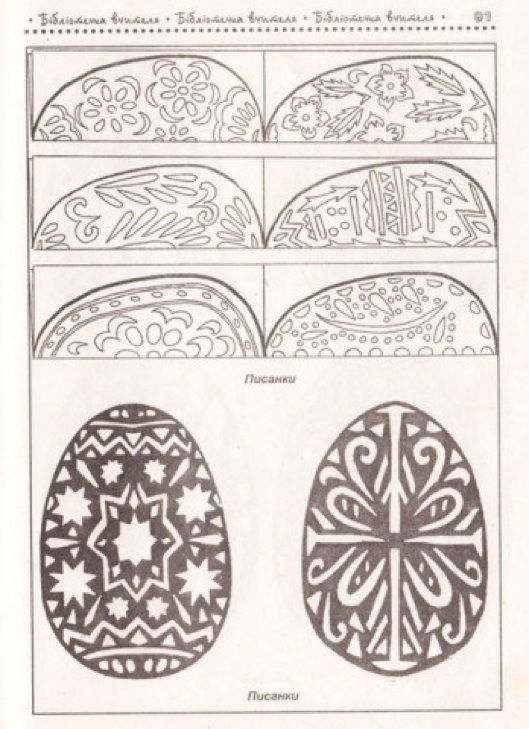

Витинанки була невід’ємною частиною українського побуту. По ній можна було читати, що відбувається в селі, хто народився, де весілля, які свята. Вікна були прикрашені паперовими занавісками, майстерно вирізаними господинею будинку.
Vytynanka been an integral part of Ukrainian life. On it you can read what's going on in the village who were born, where weddings are holidays. The windows were decorated with paper curtains, elaborately carved mistress of the house.
Витинанки - один із видів українського народного декоративного мистецтва, що має глибокі й багаті традиції. Це сюжетні та орнаментальні прикраси житла, ажурно або силуетно витяті ножицями, вирізані ножем з білого й кольорового паперу.Їх використовували для прикрашання стін, вікон, полиць, груб, коминів, печей.
Vytynanka - one of the Ukrainian decorative folk art that has deep and rich tradition. These thematic and ornamental decorations for the home, home, fishnet or silhouette cut out with scissors, cut with a knife and white and color paper. They were used to decorate walls, windows, shelves, stoves, chimneys, furnaces.
Українські народні паперові витинанки як прикраси сільських хат з'являються у середині XIX ст. незалежно від писарських і дворянських витинанок. Орнамент традиційних витинанок здебільшого геометричний і рослинний, трапляються також антропо- та зооморфні фігурки, зображення предметів побуту, архітектури тощо. Папір при витинанні складали вдвоє, вчетверо, увосьмеро, що дозволяло створити сталі структури, композиції.
Ukrainian folk paper Vytynanka rural houses as decorations appear in the middle of the XIX century. regardless of the pen and noble vytynanok. Ornament vytynanok mostly traditional geometric and plant, there are also anthropogenic and zoomorphic figurines, pictures, household items, architecture and more. Paper at vytynanni made twice, four times, eight times, allowing a steel structure and composition.
Витинанки кінця XIX — початку XX ст. вирізняються високою художньою майстерністю. У кожному регіоні та в багатьох осередках вони набули своєрідних локальних рис щодо трактування матеріалу, форми, силуету, технічної вправності, відчуття ритму, пропорцій, симетрії, багатства орнаментики.
Vytynanka late XIX - early XX century. distinguished by high artistic skill. In each region, and many centers have acquired the distinctive features of local interpretations of the material, shape, silhouette, technical skill, sense of rhythm, proportion, symmetry, wealth ornamentation.
Найбільш поширеними витинанки були на Поділлі, Подніпров'ї та Прикарпатті. На Подніпров'ї вони часто доповнювали хатні розписи. Для Поділля властиві два типи розташування витинанок на стінах — шпалерний і килимовий. На Прикарпатті їх наліплювали поздовжніми стрічками попід стелею, по сволоку, навколо вікон. Витинанки побутували у поєднанні зі шкіряними прикрасами, настінними розписами, вишивками, збагачуючи свої форми й орнаментальні мотиви. Сучасні витинанки перестали бути лише селянськими виробами та хатніми прикрасами. У 20—30-ті роки їх використовували для оздоблення клубів, читалень, стіннівок і плакатів. З 60-х років витинанки експонуються на виставках, їх застосовують для оформлення поліграфічної продукції.
The most common Vytynanka were on the tail, Dnieper and the Carpathians. On the Dnieper, they often supplement household lists. For the typical two types of skirts vytynanok location on the walls - wallpaper and carpet. In the Carpathian their naliplyuvaly longitudinal strips under a ceiling, on ceiling beam around the windows. Vytynanka pobutuvaly in combination with leather decorations, wall paintings, embroidery, enriching our forms and ornamental motifs. Modern Vytynanka ceased to be only the peasants' products and indoor decorations. In the 20-30's were used to decorate clubs, chytalen, stinnivok and posters. With 60 years Vytynanka exhibited at trade shows, are used to design printed materials.
На початку 80-х років над витинанками працювали Дмитро Мимрик з с. Великий Говилів Тернопільської області, Софія Приймак з с. Петриківка Дніпропетровської області, Любов Процик зі Львова, Людмила Лузгіна із Запоріжжя, Галина міль з Києва та ін. Група самобутніх майстрів займалася витинанням у селах Тлумацького району Івано- Франківської області.
In the early 80's over Vytynanka worked with Dmitry Mymryk with. Great Hovyliv Ternopil region of Sofia Pryymak with. Petrykivka Dnipropetrovsk region, Procyk Love from the city, Lyudmila Luzhina from Kiev, Galina from Kyiv moth and others. Group of original masters engaged in the villages vytynannyam Tlumach district of Ivano-Frankivsk region.
Паперові витинанки придатні й в умовах сучасного міста. Вони застосовуються як новорічні прикраси вітрин і вікон. До техніки витинання і мотивів народних візерунків все частіше звертаються сучасні художники.
Paper suitable and in a modern city. They are used as Christmas decorations display cases and windows. By Technology vytynannya folk patterns and motifs are increasingly turning contemporary artists.
http://about-ukraine.com/index.php?text=52

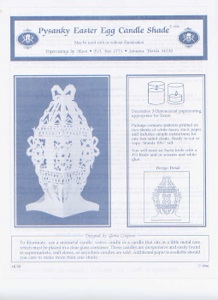
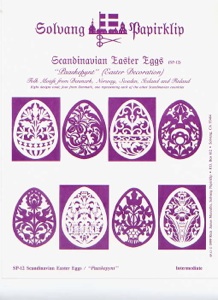
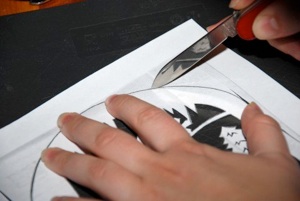
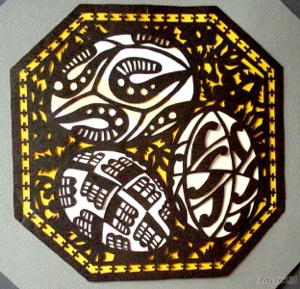
Back to MAIN Pysanka home page.
Back to Main Pysankiana home page.
Back to Pysanka Index.
Search my site with Google
Art from Paper and Scissors

